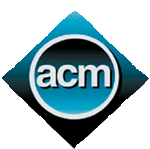
26th Annual ACM Symposium on Applied Computing
Track on Service Oriented Architectures and Programming
TaiChung, Taiwan
21 - 25 March, 2011

 |
26th Annual ACM Symposium on Applied Computing Track on Service Oriented Architectures and Programming TaiChung, Taiwan 21 - 25 March, 2011 |  |
|
Call For Paper Important Dates (Extended deadline) Submissions Accepted papers PC Members Coreviewers Track Chairs ACM SAC 2011 Home |
ACM SAC 2011
For the past twenty-five years, the ACM Symposium on Applied Computing
has been a primary and international forum for applied computer
scientists, computer engineers, and application developers to gather,
interact and present their work. SAC 2011 is
sponsored by the ACM Special Interest Group on Applied Computing
(SIGAPP), and is hosted by Tunghai University in TaiChung, Taiwan.
Although when considered from a purely technological point of view
Service-Oriented Programming (SOP) is not an enormous novelty, when it
comes to paradigmatic considerations SOP is quickly changing our
vision of the Web. Originally, the Web was mainly seen as a means of
presenting the information to a wide spectrum of people, but SOP is now
triggering a radical shift to a vision of the Web as a computational
fabric where loosely coupled services interact publishing their
interfaces inside dedicated repositories, where they can be searched
by other services, retrieved and invoked, always abstracting from the
actual implementation. In the context of this modern paradigm we have
to cope with an old challenge, like in the early days of
Object-Oriented Programming when, until key features like
encapsulation, inheritance, and polymorphism, and proper design
methodologies were defined, consistency in the programming model
definition was not achieved. The complex scenario of Service Oriented
Programming needs to be clarified on many aspects, both from the
engineering and from the foundational point of view.
From the engineering point of view, there are open issues at many levels. Among others, at the system design level, both traditional approaches based on UML and approaches taking inspiration from business process modeling, e.g. BPMN, are used. At the composition level, although WS-BPEL is a de-facto industrial standard, other approaches are appearing, and both the orchestration and choreography views have their supporters. At the description and discovery level there are two separate communities pushing respectively the semantic approach (ontologies, ...) and the syntactic one (WS-BPEL, ...). In particular, the role of discovery engines and protocols is not clear. In this respect we still lack adopted standards: UDDI looked to be a good candidate, but it is no longer pushed by the main corporations, and its wide adoption seems difficult. Furthermore, a new different implementation platform, the so-called REST services, is emerging and competing with classic Web Services. Finally, features like Quality of Service, security, sustainability and dependability need to be taken seriously into account, and this investigation should lead to standard proposals. From the foundational point of view, formalists have discussed widely in the last years, and many attempts to use formal methods for specification and verification in this setting have been made. Session correlation, service types, contract theories and communication patterns are only a few examples of the aspects that have been investigated. Moreover, several formal models based upon automata, Petri nets and algebraic approaches have been developed. However most of these approaches concentrated only on a few features of Service Oriented Systems in isolation, and a comprehensive approach is still far from being achieved. The Service Oriented Architectures and Programming track aims at bringing together researchers and practitioners having the common objective of transforming Service Oriented Programming into a mature discipline with both solid scientific foundations and mature software engineering development methodologies supported by dedicated tools. In particular, we will encourage works and discussions about what Service Oriented Programming still needs in order to achieve its original goal, along with works proposing comparison among different models and technological solutions. Major topics of interest will include:
Authors are invited to submit original unpublished papers. Peer
groups with expertise in the track focus area will double-blindly
review submissions. Accepted papers will be published in the annual
conference proceedings. Prospective papers should be submitted to the
track using the provided automated submission system. Papers NOT
presented at conference will NOT be included in the ACM digital
library. Authors are allowed up to 8 pages, but with more than 6
pages in the final camera ready, there will be a charge of
80USD per extra page. Submission of the same paper to multiple tracks
is not allowed.
The conference is running a double-blind review process. The submitted manuscript should not include any information which could reveal the authors' identity. The title section of the submitted manuscript should not contain any author names, email addresses, or affiliation status. If the submitted manuscript do include any author names on the title page, the submission will be automatically rejected. In the body of the submission, there should be no direct references to previous work of the authors. That is, phrases such as "this contribution generalizes our results for XYZ" should be avoided. Also, authors' own previous work should not be disproportionately cited. In other words, the submission should be as anonymous as possible. We need your cooperation in our effort to maintain a fair, double-blind reviewing process - and to consider all submissions equally. Please visit the SAC 2011 Website for further information: http://www.acm.org/conferences/sac/sac2011/
|